Ancient North American Art (~13th century BC-~15th century AD)
North America has been populated for thousands of years. Initially, nomadic tribes settled in more hospitable regions, living in caves or tents. Evidence of such early civilizations is seen in petroglyphs, or rock carvings. Recently, petroglyphs in Nevada were dated to 14,800 years old. They depict abstract symbols like diamonds and squares, but also involve naturalistic scenes like trees and flowers. Petroglyphs give historical evidence of the first peopling of North America. Here are some rocks with petroglyphs, broken apart over centuries, but still clearly bearing markings of the early artist’s chisel such as a scale-like pattern.
Early North American art differed based on region. The Southwest region was arid and rocky. Its inhabitants excelled in pottery making and pueblo, or village art. Famous early tribes of the Southwest include the Anasazi and Navajo peoples. Pottery was often simple and utilitarian, like the bowl and vase shown here.

Rock art was more detailed. Scenes carved into rocks included humans hunting animals and performing rituals, as well as abstract symbols. Below is a picture of Anasazi rock art in Nevada from over 8,000 years ago.
Most often, this primitive form of art was made with adobe and clay, which baked in the sun and retained heat. Today, the Zuni and Hopi peoples continue with the artistic traditions of their ancestors in the Southwest. This video shows how current Hopi people copy their ancestors in the art of pottery: In the Great Plains region, the indigenous people were mostly nomadic. They followed the buffalo, which provided food, clothing, walls for tents, and led people to water. The art of the Great Plains mostly consisted of carved shells and bones, weaving, and effigy mounds. In addition, the Plains Indians (as they are called now) used a form called quill work, shown below, which involved stripping the quills for a porcupine to use in sewing and weaving.

The most famous Plains tribes were the Adena and Hopewell cultures. These cultures both created sculptures out of stone that were rubbed with rough objects to create a smoother, shiny surface. This human effigy pipe is attributed to the Hopewell tribe, and was found in Ohio, the state where I live! It is dated all the way back to 100AD. The detail is quite incredible when you consider the rough and imprecise tools these aboriginal people used.
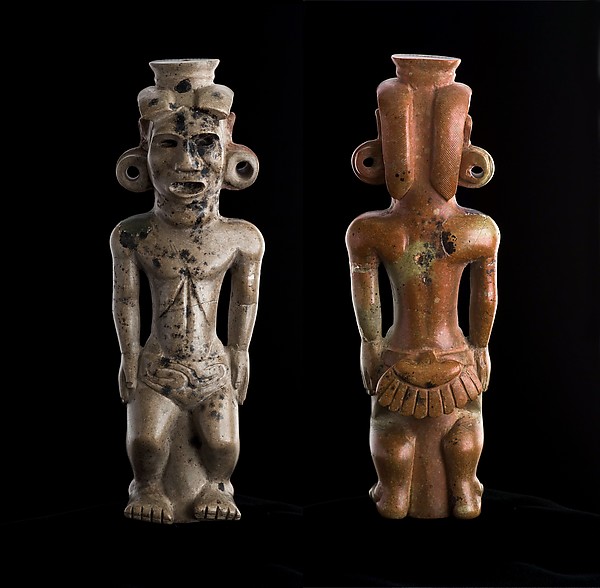
The central South and Southeast people of North America are probably the most well-known for their art and architecture. Tribes like the California Indians, the Poma, and the Great Lakes tribes built temples, monuments, and used shells and stones for ornaments and jewelry. Southern art was both beautiful and functional. This concept is well-embodied in the wood duck diorite bowl, that serves to hold items and also is beautiful to behold.

In the California area, intricate basketry ruled. Natives used reeds, grasses, and other fibrous plants to weave multi-colored and patterned baskets. The geometric shapes and earth tones have become stereotypical of Native American art, although in reality there existed great artistic variations. Here you see a basket made by early Native Americans of the Southwestern region.

Finally, the Eskimo or Inuit peoples of modern-day Alaska and Canada contributed to the early art scene in North America. The Inuit life was tough. These peoples had to survive freezing weather, large prey, and limited resources. Despite these circumstances, they still made time for art. The Eskimos made sculptures and carvings using ivory from animal tusks, tooth, black pigment, and shell. This amulet was made of ivory, and detailed using black pigment, perhaps from coal.

In the Northwest, the commonly known totem poles were a major art form. Totem poles have become extremely stereotyped in Western culture, but were not in fact made to be danced around or worshipped as deities. Instead, they memorialized the status, family, and wealth of important people such as village chiefs. These factors were recorded symbolically, yet understood in the language of the time. Totem poles such as the one below have endured and been remodeled, and still show ancient North American artistic culture today.

Colonial North American Art (16th century AD-19th century AD)
Colonial North America was shaped, and given in the name, by colonies. European contact with indigenous people dramatically changed the North American landscape. Europeans came to the “New World” with Christianity and in search of glory and gold. Much of indigenous art was destroyed because the colonizers thought native religion was heathen and outlawed it. Instead, the colonizers brought European art, and mimicked what they believed to be cultured and high-class. Colonists mainly used pewter, silver, glass, and textiles to create furniture and dishes. This beautiful silver and varnished-wood teapot was created in the mid-1700s. It bears the crest of an important Massachusetts family, and would be used for fine tea.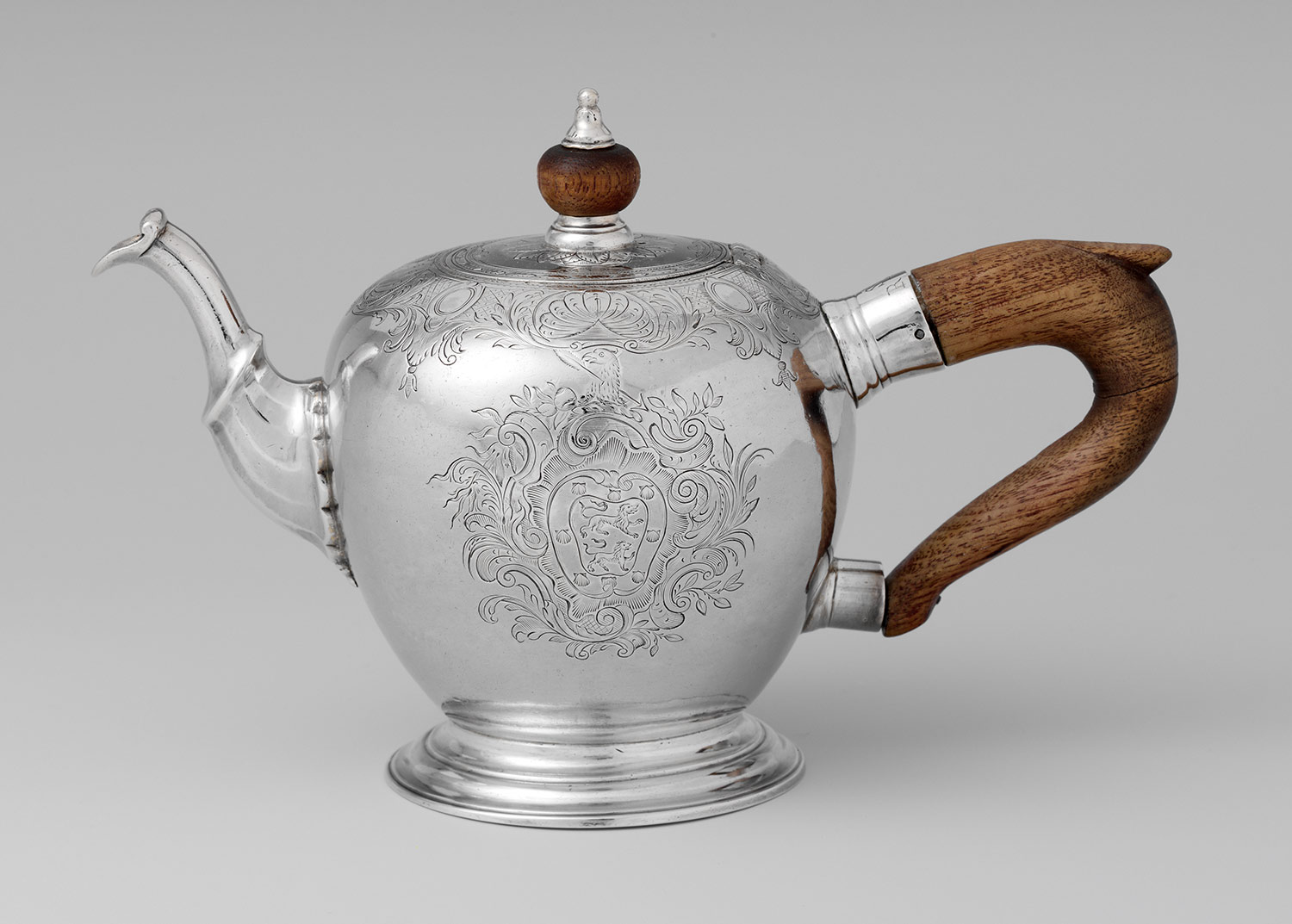
The furniture in colonial homes was particularly elaborate. For example, this 18th century side chair was hand-carved and embroidered. Trees were an abundant natural resource, and woodworkers could make good money serving commissions from rich families.

The main type of colonial art other than three-dimensional utilitarian objects was painting, especially portraits. People with political power, positions in church, or high social standing would have portraits commissioned. It was typical for the lady of a plantation home to have her portrait hanging in the foyer for guests to view. Take, for example, this portrait of Mrs. Ralph Izard. The subject’s name was Alice De Lancey, but it was traditional for ladies to be referred to as the Mrs. of their husbands, stemming from the time when wives were property of their husband. In the portrait, the lady wears her hair and dress in British fashion. She and her family lived in South Carolina, and as Loyalists during the Revolutionary war were especially connected to their British past. The portrait is modest and realistic, painting Ms. De Lancey in a soft and warm light.
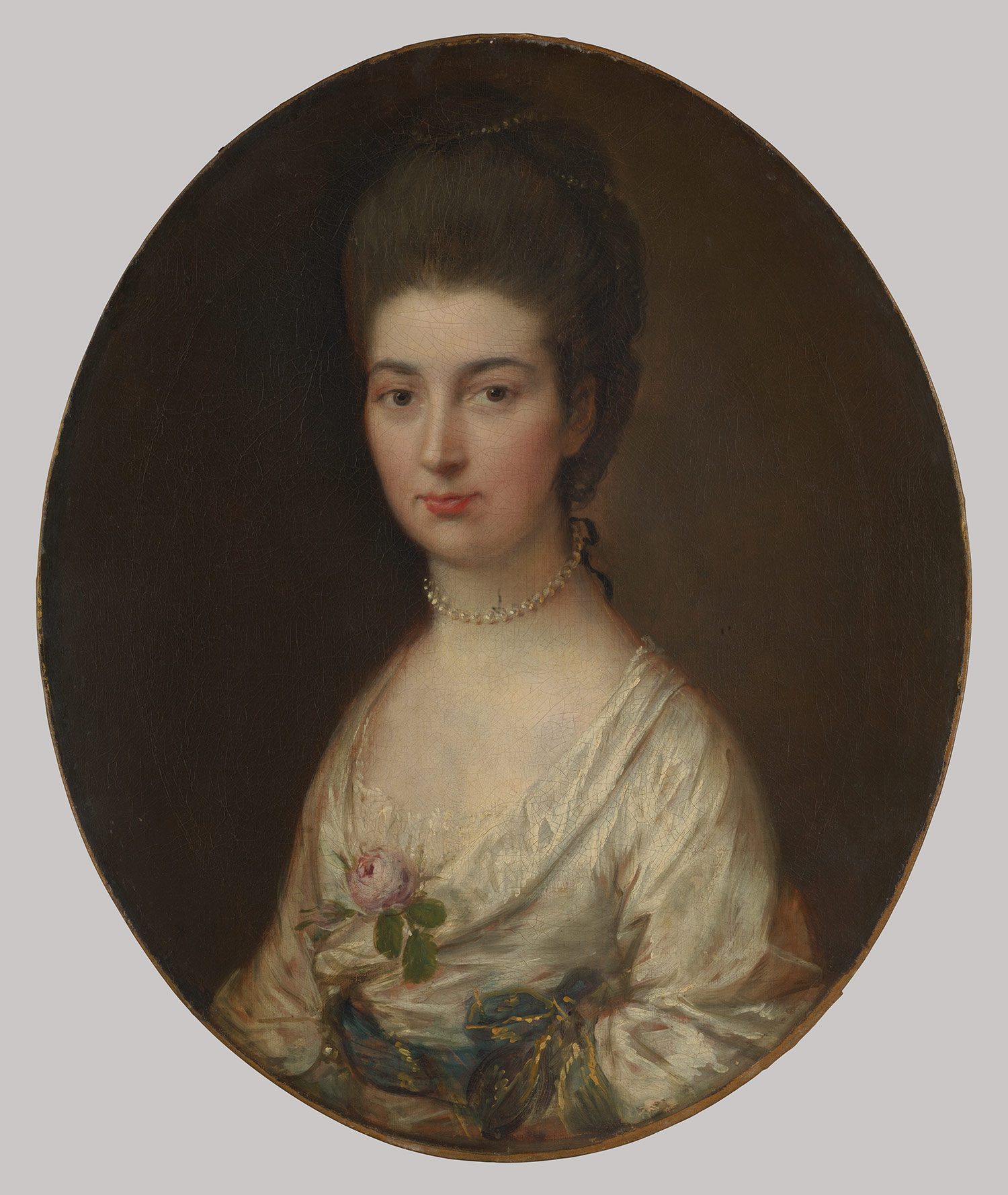
The other popular type of North American painting during this period was the landscape view. Landscape paintings often toed the line between beautiful and surreal. They invoked Christian ideals of heaven on Earth, and during the period of Manifest Destiny were focused on the riches that lay westward. The Hudson River School of art embodied landscape paintings of the time. It began in the mid-1800s, led by Thomas Cole. Pictured here is The Oxbow, a picturesque scene of the river near Mount Holyoke in Massachusetts. The mountains extending out beyond the viewer’s sight are typical of these paintings, as is the mix between a detailed foreground and more abstract, almost impressionist background.
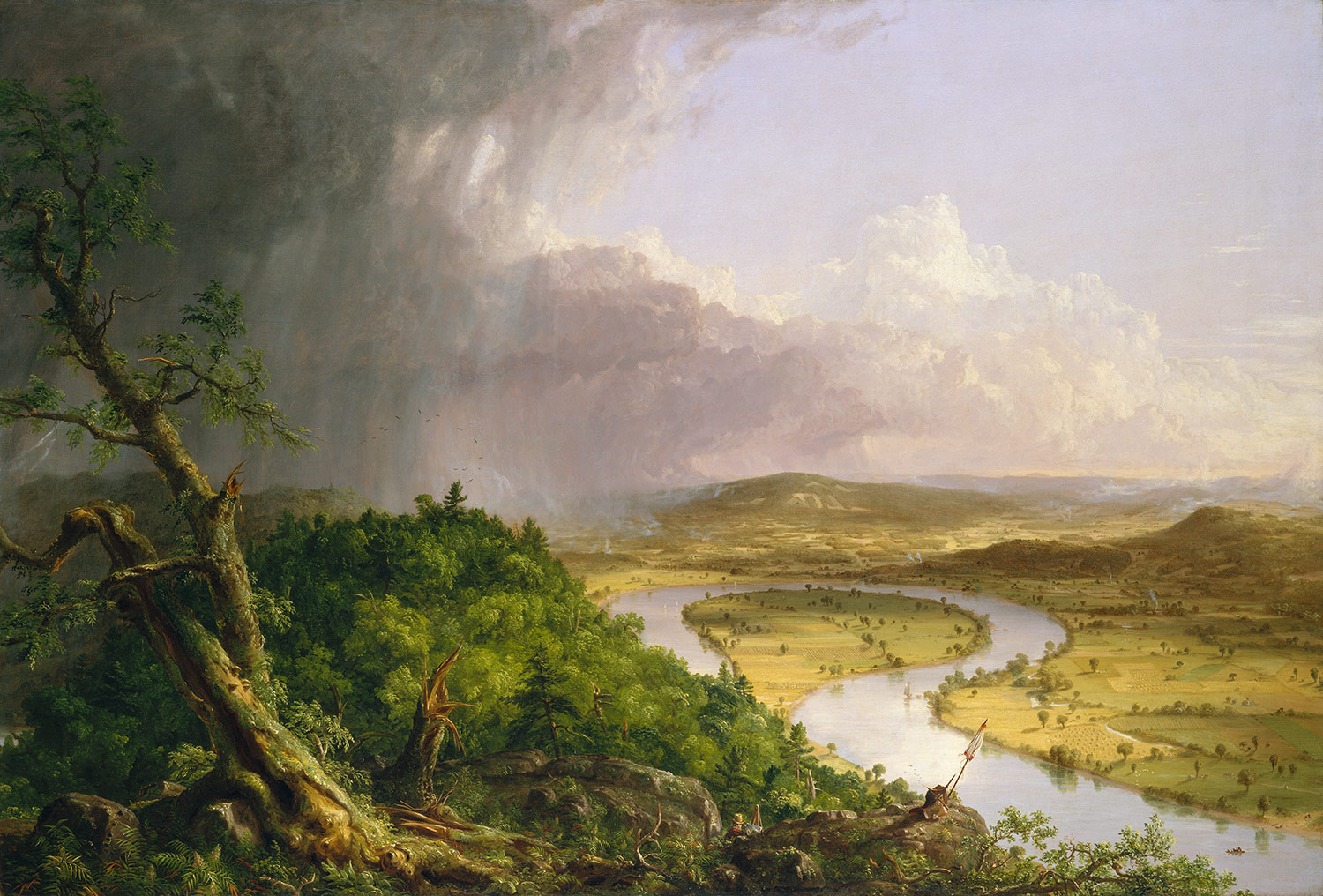
It is important to remember that the Native Americans continued to be active in the artistic and cultural scene. Although driven from their homes and often killed, by disease or advanced weaponry, these cultures still constituted the majority of the United States during the colonial era. This intricate and functional cradle was made in the late 19th century by a woman of the Kiowa tribe.

Modern North American Art (20th century AD- today)
The modern artistic era in North America has been one of the most diverse in the world. Over the years, cultures from every part of the Earth have immigrated to North America and brought with them their unique styles and flavors. The Canadian region has been largely influenced by French and Middle Eastern cultures, and the United States is famous for being a microcosm of our varied world. Here, we will highlight a few artistic movements of the modern era, keeping in mind that a comprehensive analysis of modern art would fill books.Jackson Pollock is a well-known American example of an abstract artist. He is credited with the drip painting method, by which paint is dropped or splashed onto the canvas. Abstract paintings are often bright and chaotic, representing energy in its purest form. Here is Pollock’s Convergence, painted using the drip method on canvas with oil paints.
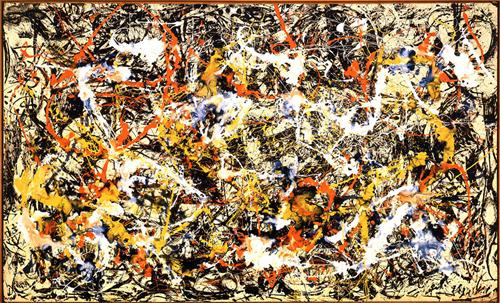
Another well-known artistic style of the 1900s was Pop Art. One of the greatest American artists, Andy Warhol, used the Pop Art style to comment on the artificiality and commercialization of American culture. Below is his famous exhibition of Campbell tomato soup cans.

Robert Indiana is also a legend of the Pop Art era. He has done both paintings and sculptures. Perhaps the most famous is his red LOVE sculpture, which has appeared on many postcards and been copied across the nation.

Both of these artists are exhibited at the Museum of Modern Art (MoMA). I have always wanted to visit this museum, and perhaps if you are in New York you will get to see first-hand the stunning and thought-provoking works of modernism. Here is a glimpse inside MoMA, which is itself an architectural piece of art.

Speaking of architecture, North America has been home to some fabulous architects. Architecture can be considered the most utilitarian of the arts. It makes a statement on a grand scale, often drawing inspiration from its surroundings. This notion is epitomized in Frank Lloyd Wright’s architecture. Wright’s famed Falling Water house is built into the natural surrounding it. It literally bridges a waterfall, and makes room inside for the trees naturally growing in the area. Would you want to live in this natural house?
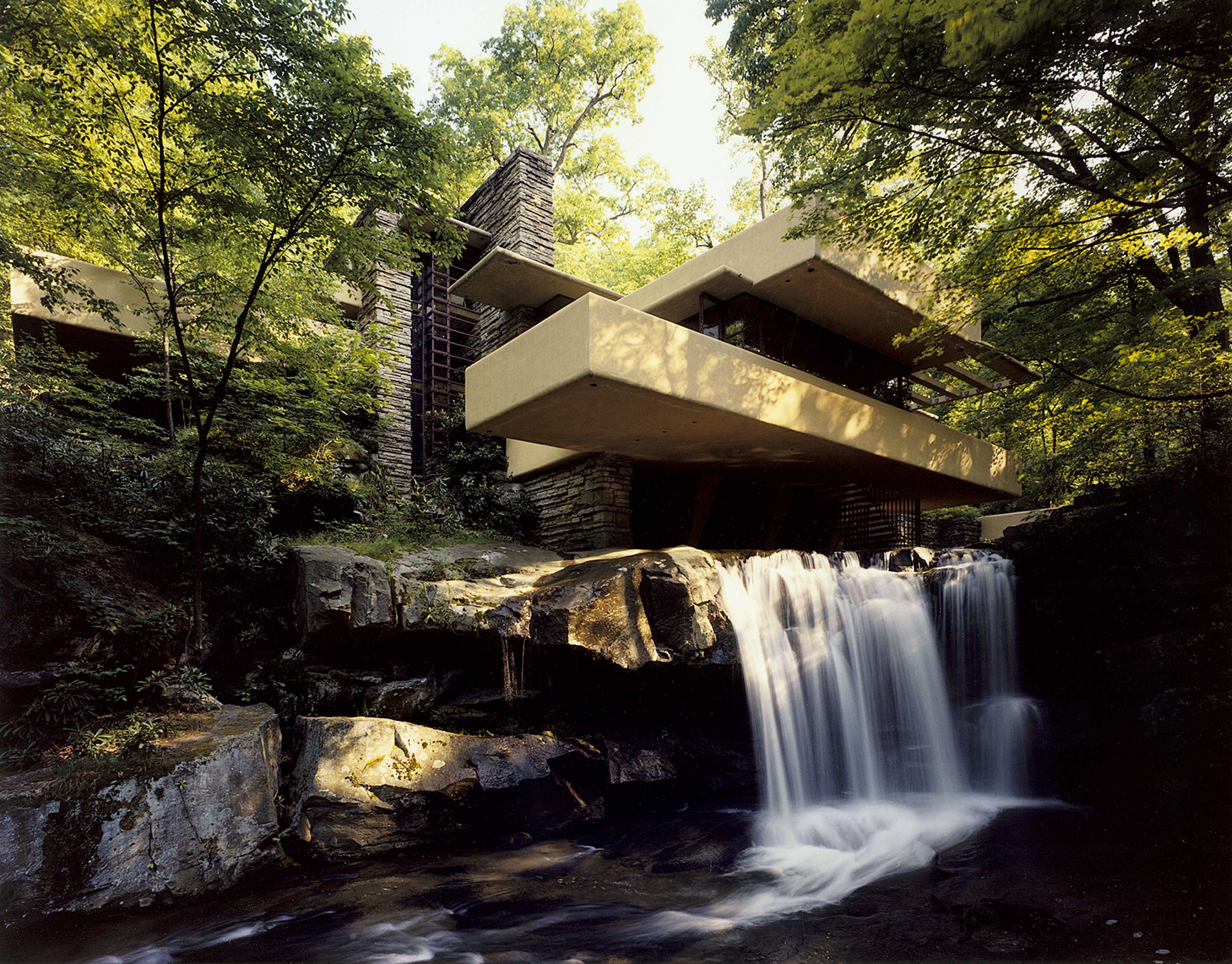
Citations: http://www.infoplease.com/encyclopedia/entertainment/american-art-the-colonial-period.html http://www.metmuseum.org/toah/hd/arid/hd_arid.htm http://www.visual-arts-cork.com/history-of-art/american-art.htm#modernism http://news.nationalgeographic.com/content/dam/news http://www.ancestral.com/images/cultures/north_america/anasazi http://www.onlinenevada.org/sites/default/files/styles/750x400/public/White_River_-_NDOT_image.JPG?itok=FckGgZTP https://www.youtube.com/watch?v=YWZnvpfjmtc http://firstpeoplesofcanada.com/images/firstnations http://www.moma.org http://www.britannica.com/art/Native-American-art#toc272250 http://www.visual-arts-cork.com/history-of-art/american-art.htm#modernism